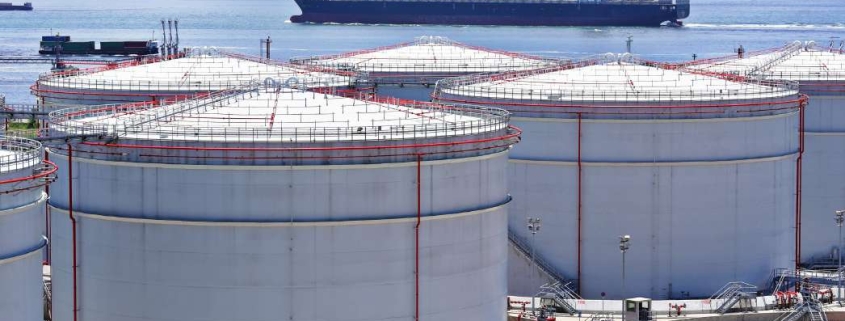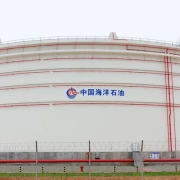Design Storage Tank: API 650 vs API 620 vs EN 14015
مقدمة
The API 650, API 620, and EN 14015 standards are widely recognized in the industry for designing, constructing, and inspecting aboveground storage tanks. API 650 focuses on welded tanks for oil storage, with a design pressure up to 2.5 PSI and a temperature range of -40°F to 500°F, primarily using carbon steel and other weldable materials. In contrast, API 620 covers large, welded, low-pressure storage tanks, designed for pressures up to 15 PSI and a wider temperature range of -325°F to 250°F, accommodating a variety of materials including carbon, nickel, and stainless steel. Meanwhile, the European standard EN 14015 addresses vertical, cylindrical, flat-bottomed, welded steel tanks suitable for ambient temperatures and above, with design considerations for atmospheric and low pressure, as well as wind, seismic, and snow loads. These standards provide comprehensive guidelines for the industry, ensuring the safe and reliable operation of storage tanks across diverse applications and environmental conditions. This article will explore the differences between API 650 vs API 620 vs EN 14015.
Specifications: API 650 vs API 620 vs EN 14015
What is API 650 Standard?
API 650 standard for designing and constructing welded oil storage tanks. It covers the design, fabrication, erection, and inspection of steel storage tanks, ensuring they’re safe, reliable, and meet the requirements for storing crude oil and other petroleum products. Its primary focus is tanks that operate at atmospheric pressure or at a very slight pressure.
What is API 620 Standard?
API 620 standard for designing and constructing large, welded, low-pressure storage tanks. These tanks are ideal for storing gases and high-volatile liquids at lower pressures, i.e., up to 15 PSI. This standard is often utilized for tanks storing liquefied natural gas (LNG) and other cryogenic substances.
What is EN 14015 Standard?
EN 14015 sets out the standards for vertical, cylindrical, flat-bottomed, above-ground, welded steel tanks. These tanks are used to store liquids at ambient temperature and above. This standard doesn’t specify a range for operating temperature. The primary materials for these tanks are carbon and stainless steel, but other materials can be utilized depending on the requirements. EN 14015 considers several environmental factors like wind load, seismic conditions, and snow load. Inspection and testing are rigorous and include radiographic and ultraviolet testing.
Main Differences: API 650 vs API 620 vs EN 14015
| Criteria | أبي 650 | أبي 620 | EN 14015 |
| نِطَاق | Welded tanks for oil storage | Large, welded, low-pressure storage tanks | Vertical, cylindrical, flat-bottomed, aboveground, welded, steel tanks |
| ضغط | Designed for atmospheric pressure (up to 2.5 PSI) | Designed for low pressure (up to 15 PSI) | Designed for atmospheric and low pressure |
| درجة حرارة | -40°F to 500°F | -325°F to 250°F | Ambient temperature and above |
| مادة | Carbon steel and other weldable materials | Carbon, nickel, الفولاذ المقاوم للصدأ, and other weldable materials | Primarily carbon and stainless steel, but can use other materials |
| Shapes | Cylindrical with flat or slightly sloped bottom | Cylindrical or spherical | Vertical, cylindrical, flat-bottomed |
| Applicable Liquids | Crude oil, gasoline, etc. | Suitable for gases and cryogenic liquids | Suitable for various liquids at ambient temperatures and above |
| متطلبات التصميم | Seismic conditions, wind load | Seismic conditions, wind load, snow load | Wind load, seismic conditions, snow load |
| Foundation | Pile, mat, ringwall, or slab foundations | Reinforced concrete, pile or mat foundations | Flat-bottomed tanks to be installed on a good quality level and flat surface |
| Inspection & Testing | Radiographic examination for butt-weld joints | Requires radiographic testing for all vertical and horizontal butt welds | Requires radiographic and ultrasonic testing |
| Roof types | Cone roof, dome roof, open top, floating roof | Cone roof, dome roof | Fixed roof, floating roof |
| Leak detection | Requires leak testing | Requires leak testing | Requires leak detection methods |
| Venting | Provides guidelines for normal and emergency | Provides guidelines for normal and emergency | Covers venting under normal and emergency |
Conclusion: API 650 vs API 620 vs EN 14015
In conclusion, the key differences between API 650, API 620, and EN 14015 standards lie in their intended scope, design parameters, and technical requirements. API 650 primarily focuses on welded tanks for oil storage, with a broader temperature range and lower pressure capabilities compared to API 620, which is designed for large, low-pressure storage tanks, including those used for cryogenic liquids. Meanwhile, EN 14015 takes a more general approach, covering a broad range of vertical, cylindrical, flat-bottomed, above-ground, welded steel tanks suitable for various liquids at ambient and elevated temperatures. The selection of the appropriate standard depends on the project’s specific application, operating conditions, and regulatory requirements. Engineers and tank designers must carefully evaluate each standard’s unique characteristics and nuances to ensure the safe and reliable construction of storage tanks that meet the necessary performance and safety criteria.





